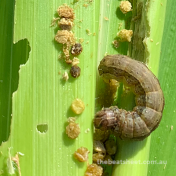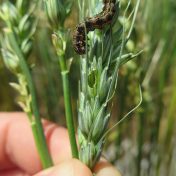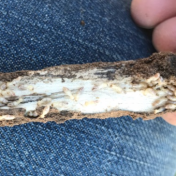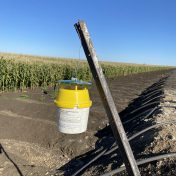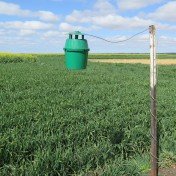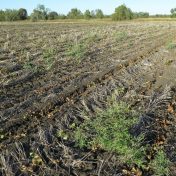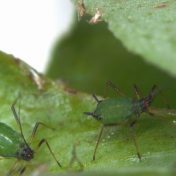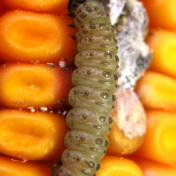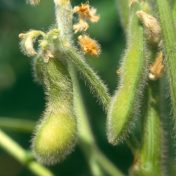With the detection of fall armyworm (FAW, Spodoptera frugiperda) throughout Queensland and now in major cropping regions in NSW, growers are wondering about the best management options for protecting their summer cereal crops. The latest research from NSW DPI provides information that can assist growers in deciding the most appropriate course of action for managing outbreaks of fall armyworm if… Read more »
Helicoverpa outbreaks in wheat are relatively rare events. The last big outbreak, in 2016, was the first significant event for several decades, so treating helicoverpa in wheat is not something that many agronomists are familiar with. However, 2020 looks to be a year when helicoverpa infestations in some crops may warrant control. Wet winters are well correlated with outbreaks of… Read more »
Termites are common in undisturbed parts of the landscape, playing an important role in the ecosystem. It is unusual to find them in crops—but in 2020, there have been several reports of termites in winter cereals. The first reports were received during crop establishment, and more were received once the crops started to come out in head and set grain…. Read more »
Fall armyworm (FAW, Spodoptera frugiperda) is an exotic pest that was first detected on the Australian mainland in February 2020. State and federal biosecurity organisations have determined it to be unfeasible to eradicate this pest and it is now classified as endemic. In response to this incursion, the Queensland Government has funded a network of traps to better understand the… Read more »
The annual Helicoverpa spp. pheromone trapping program for the Northern Grains Region commenced last month. During the first few weeks of trap catches, trap operators have detected flights of both H. punctigera and H. armigera in pheromone traps across the Northern Region. As we have seen in the last six years of our trapping program, H. armigera flights are consistently… Read more »
Key points: There was a resurgence in tobacco streak virus (TSV) disease in mungbeans in early 2020 TSV is restricted to central QLD and closely related to the distribution of parthenium weed Growers are encouraged to avoid areas of dense parthenium to reduce risk In autumn of 2020, tobacco streak virus (TSV) was found to be common in all mungbean… Read more »
Faba bean aphid (FBA, Megoura crassicauda) was first noted in Australia on broad beans (Vicia faba L. cv. Coles Early Dwarf) in October 2016 in a Sydney suburb, (Hales et al., 2017). FBA was then recorded in September 2017 at two faba bean trial sites: NSW DPI Tamworth Agricultural Institute (TAI) and Liverpool Plains Field Station Breeza (LPFS Breeza). These… Read more »
Recent reports were received of decidedly non-armyworm looking caterpillars attacking corn cobs in a crop near Mundubbera. The larvae in question were pale with lines of large dark spots on their back, and looked very similar to a serious mungbean pest, beanpodborer (Maruca vitrata). However, the larvae in question were slightly larger (about 20 mm) and some had a slight… Read more »
As the summer cropping season winds down, there are some key observations in pulse crops made by leading consultants from New South Wales’s Northern Rivers and Queensland’s Hervey Bay regions that haven’t been covered in recent Beatsheet articles. 1: Indoxacarb failures linked to poor coverage The high Helicoverpa pressure encountered this summer resulted in many indoxacarb (e.g. Steward®) sprays being… Read more »
With a range of pest outbreaks recently (including fall armyworm), and the issuing of several new permits in Australia, there has been some confusion as to whether pulse crop references on spray labels and permits in Australia include soybeans. The good news is that the answer is yes it certainly does! Soybeans are listed by the APVMA under Crop Group… Read more »
